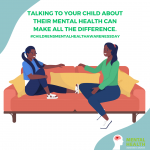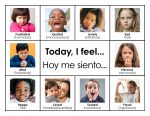The Week of May 7, 2023: Starfish Family Services joins with other providers and families across the nation to lift up Children’s Mental Health Awareness Day & Month! Good mental health is an essential part of the health development of any child. Today, 1 in 5 children struggle with mental health or a learning disorder. At Starfish we support children and families to heal – as well as – build skills and resilience to focus on overall wellness. Building a strong foundation of self-fare and positive coping skills help children, youth, and families stive for mental, emotional, and physical health. Early discovery, diagnosis, and appropriate services for children, youth, and their families make a lasting difference in the health outcomes for everyone. Starfish provides in-person, home-based, and telehealth options with trained mental health professionals. To connect to our Behavioral Health Team directly --- call 800-355-5433. Additional learning resources: … [Read more...]
Healing our children, community, ourselves
Over the last several weeks, our world and our emotions have been rocked again by inexplicable violence and the unfathomable killing of innocent children and adults in what should be safe places. Watching news reports, as well as hearing about these shootings, have the potential to activate a trauma response (especially fear or anxiety) in children, families, and the larger community. There is no easy answer. No single remedy for healing. But, as dedicated champions for children and families, we have compiled strength-based tools from multiple trusted and respected sources. And, please, never forget that Starfish is here for you. Methods for healing High profile acts of violence, particularly in a school, can confuse and frighten children who may feel they're in danger or worry that their friends or loved-ones are in jeopardy. This is true even if the incident didn't occur locally. Children identify with other children regardless of location---which may trigger signs of … [Read more...]
Starfish blog: Small Tool to Face Big Feelings
Childhood is one big roller coaster of emotions. Beginning with toddler tantrums, kids experience highs, lows, and myriad confusing feelings in between. As adults, we are able to at least identify our emotions. For a child, it's bewildering especially when they don't have the words to express how they're feeling. That bewilderment can lead to frustration, making it hard for children to listen, pay attention, and learn. What can we do to help them navigate challenging big feelings? (Feeling Faces information adapted from National Center for Pyramid Model Innovations (NCPMI) Express yourself: Feeling Faces Important tip! The best time to talk about feelings with your children is when they are not in the midst of an emotionally-charged moment. Create a calm space and try this activity where you and your little ones can explore and practice the language and skills to express emotions. Use pictures (like the Feeling Faces here) to talk about, identify, and describe different … [Read more...]


